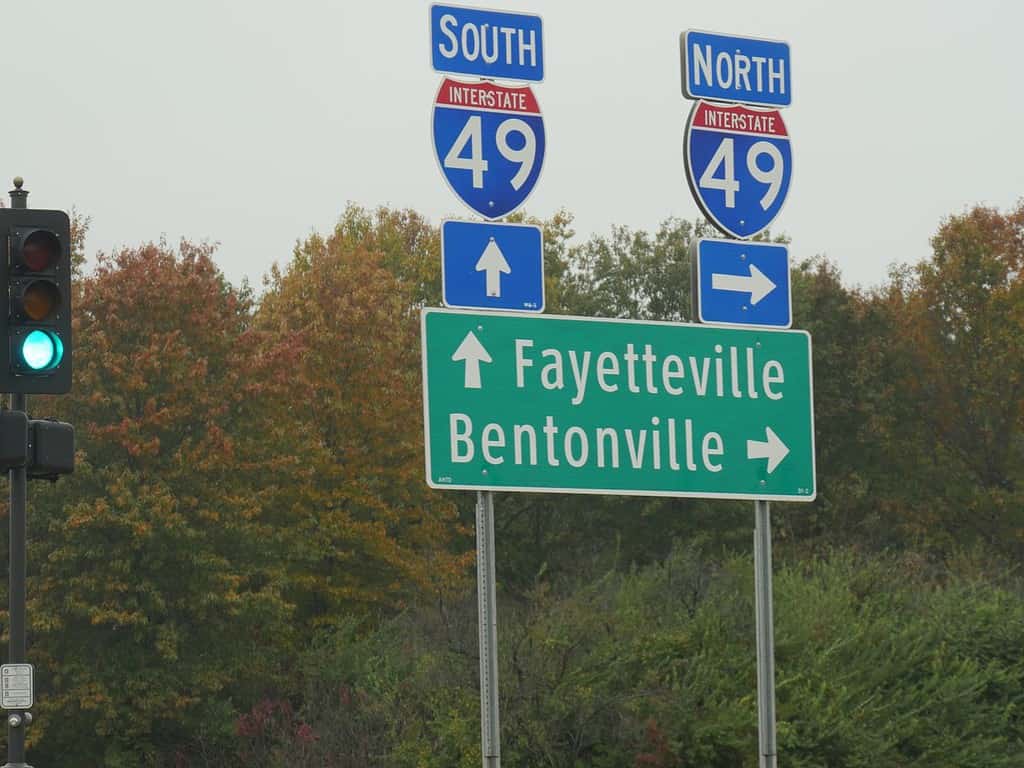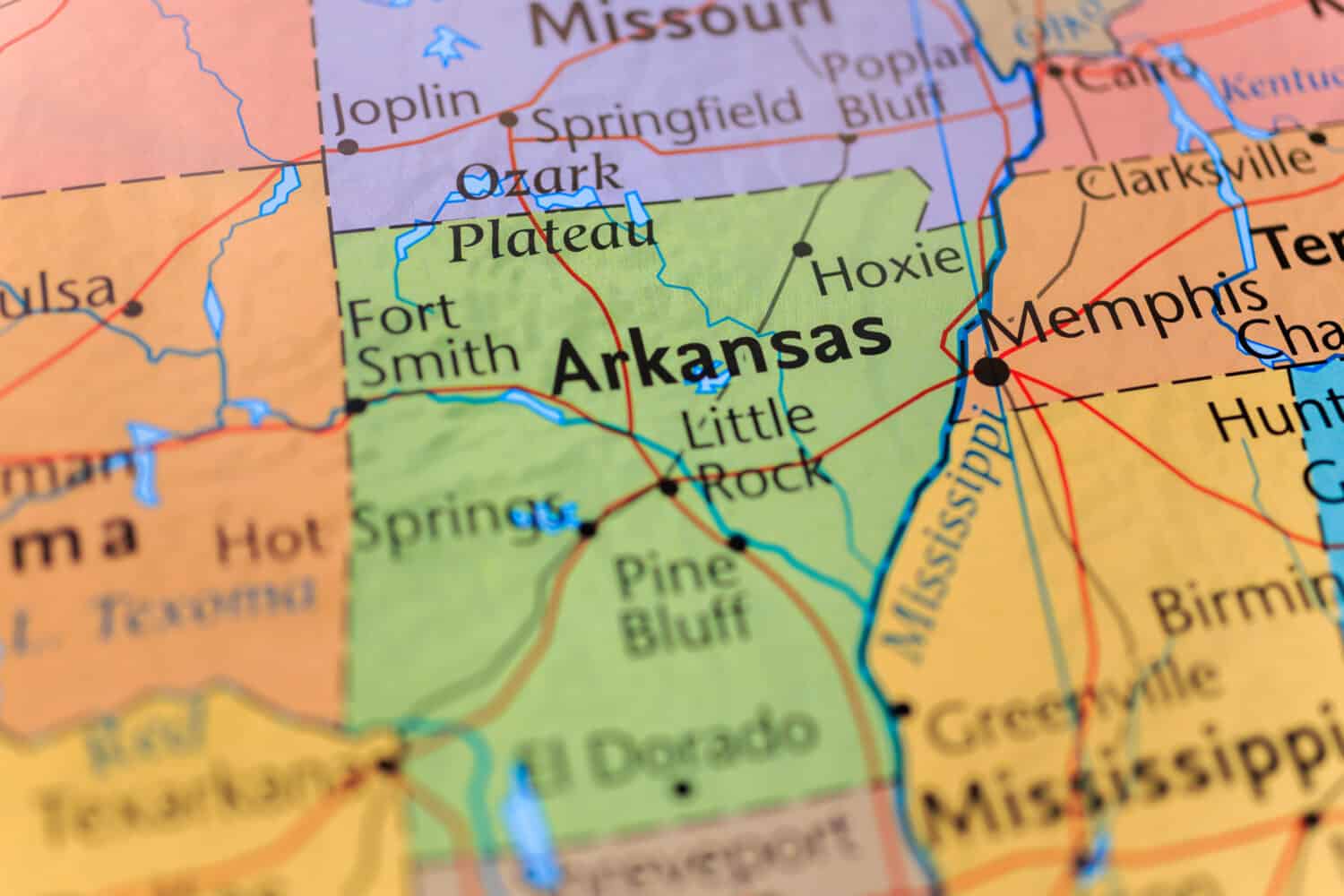Today, we head to the southern-central United States to visit a landlocked state. Arkansas is the 29th-largest state by area and is famous for being the only one that produces diamonds. Looking past gemstones, it also boasts 52 state parks and seven national park sites. The state prides itself on its natural beauty, including mountains, forests, and wildlife. We’re going to take a closer look at Arkansas as we learn some important details about it. Specifically, we want to know exactly where it is on a map. We’re going to find the map location of Arkansas. Then, we’ll take a look at both what it contains and what it is surrounded by. Where is Arkansas? We’re about to find out.
Where Is Arkansas on a Map?

Little Rock is the state capital of Arkansas, along with being the most populated city in the state.
©Sean Pavone/iStock via Getty Images
As we noted previously, Arkansas is in the South Central region of the United States. It shares a border with six other states – Missouri, Texas, Tennessee, Mississippi, Oklahoma, and Louisiana. On its eastern side, its border is created almost entirely by the Mississippi River. Now, let’s see what that looks like on a map.
As you can see, Missouri rests to the north, while Tennessee and Mississippi are separated from Arkansas in the east by the Mississippi River. To the south is Louisiana, and Texas and Oklahoma rest to the west.
Major Cities in Arkansas

Fayetteville is the second-most-populous city in Arkansas.
©RaksyBH/Shutterstock.com
Now, we’ll take a look at the most populated cities in Arkansas. The overall population of the state was 3.026 million as of the 2021 Census. This population is divided between 75 counties. 500 municipalities, including cities and towns, host this population. The most populated city in the state is Little Rock (201,998), while the smallest town is Gilbert (25). Here’s a helpful table that shows the most populated cities in the state. We used population statistics from the United States Census Bureau for this table.
| City | Population |
|---|---|
| Little Rock | 201,998 |
| Fayetteville | 95,230 |
| Fort Smith | 89,576 |
| Springdale | 87,609 |
| Jonesboro | 79,324 |
| Rogers | 71,112 |
A Short History of Arkansas
Arkansas was inhabited by Indigenous tribes for thousands of years before it became a state. European explorers didn’t arrive in Arkansas until 1541. The Spanish explorer who first found Arkansas didn’t think much of it. He took a great dislike to Native tribes and claimed he found nothing of value in the lands that would become Arkansas. His name was Hernando de Soto, and his dying act was to order his men to massacre an entire Indigenous village. He died the day following the massacre, and his men buried him in the watery tomb of the Mississippi River. They did this under cover of darkness, as De Soto had worked to convince the Native Americans that he was an immortal deity. No other European explorers would arrive until over 100 years later.
In 1673, French explorers arrived. In 1686, the first European Settlement was established at Quapaw village. Life in Arkansas stayed relatively quiet for several more decades. The lands that would become the state changed hands several times, but no one was particularly invested in the area. It wasn’t until Napoleon Bonaparte sold French Louisiana – which included Arkansas – to the United States in the Louisiana Purchase that life in Arkansas really began to change. This would spell doom for the Native Americans who still lived there and had a balanced relationship with the settlers. The 1800s changed the landscape of Arkansas forever.
When Did Arkansas Become a State?

Arkansas prides itself on its natural beauty, including mountains, forests, and wildlife.
©Bonnie Taylor Barry/Shutterstock.com
After the Louisiana Purchase, controversy about slavery sparked in the area. The Territory of Arkansas was the result of this controversy. On July 4th, 1819, the Territory of Arkansas was organized – as a slave territory. During its territorial years, the state saw a great influx of Native Americans from the East Coast and the Midwest. Other European settlements were forcing Indigenous people off their native lands and sending them to Arkansas and the “Indian Territory”. The Indian Territory was land set aside for the forced relocation of Native Americans from other states and territories. This land rested west of the Mississippi River and included Kansas, Nebraska, Oklahoma, and parts of Iowa.
By 1833, Arkansas Territory had removed the incoming Indigenous tribes, as well as the ancestral ones. This allowed the territory to push forward with its plans to become a state. On June 15, 1836, Arkansas became the 25th state to join the United States. It was the 13th slave state in the Union.
Fast Facts About Arkansas

Beaver Lake, near Rogers, Arkansas. This is one of 2,340 named lakes and reservoirs in the state.
©Patrick Jennings/Shutterstock.com
We’re going to finish up by sharing a few cool facts about Arkansas.
- Arkansas has the only active diamond mine in the United States.
- Rogers, Arkansas, was the location of the very first Walmart.
- Forests cover more than half of the state.
- Hot Springs Mountain is home to 47 hot springs.
- Home to the “Quartz Crystal Capital of the World“.
Thank you for reading! Have some feedback for us? Contact the AZ Animals editorial team.








